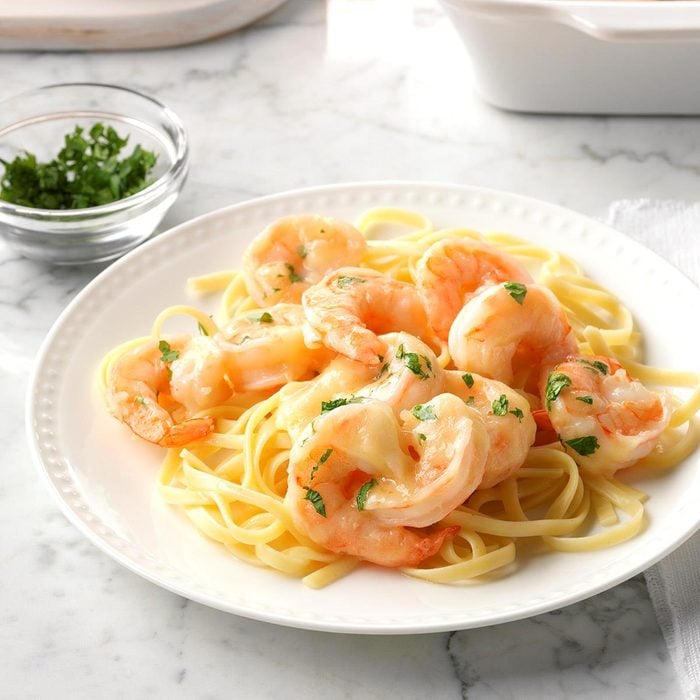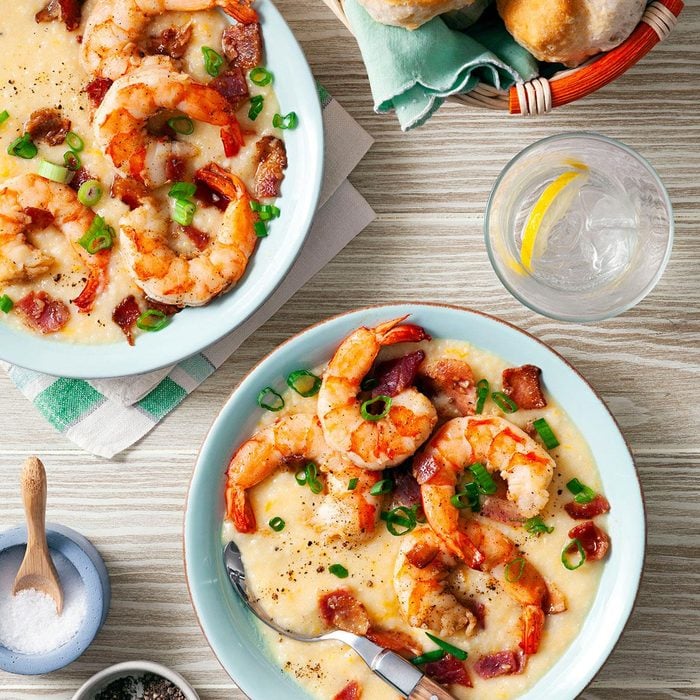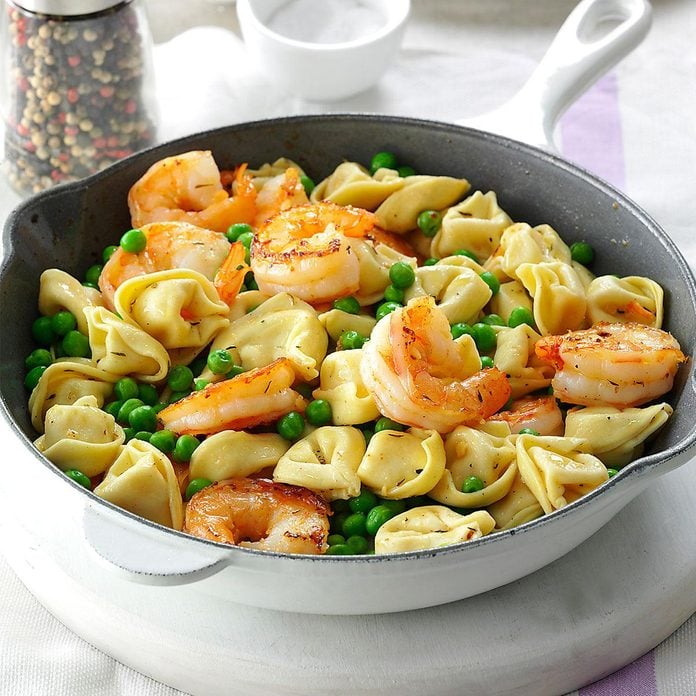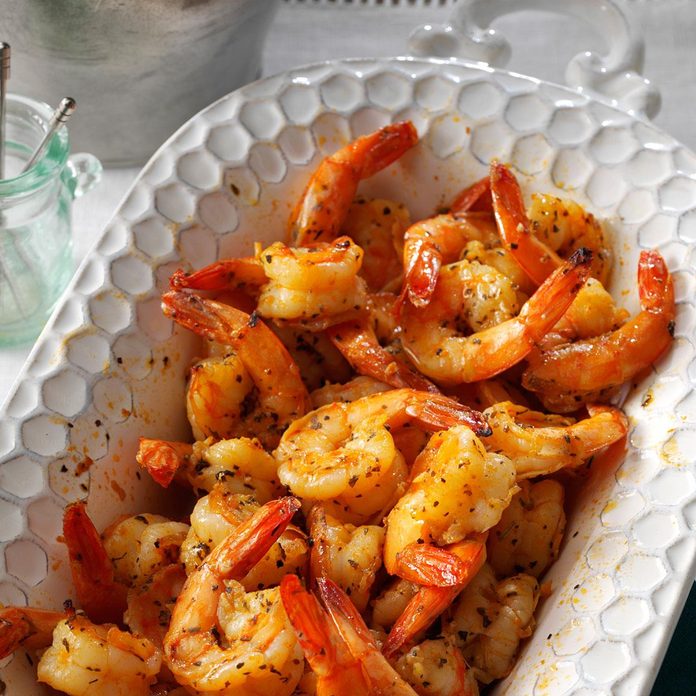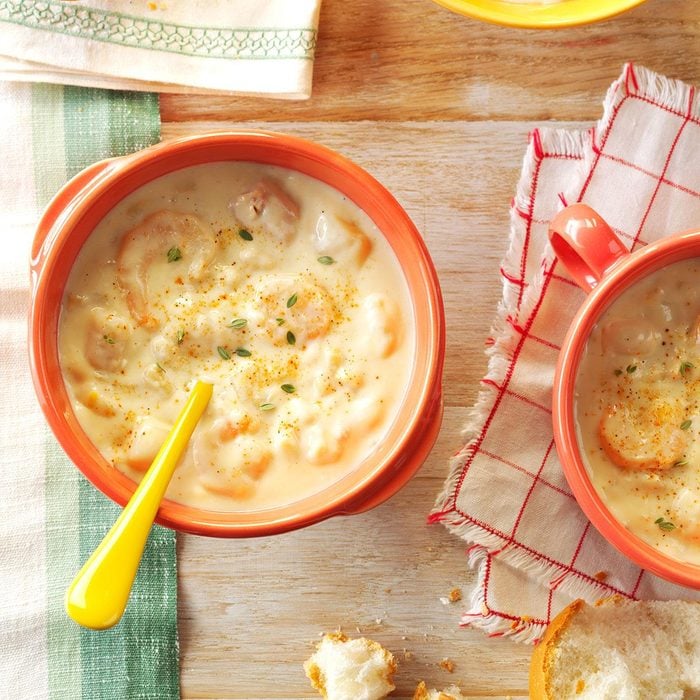How to Clean, Devein and Prep Shrimp
Updated: Sep. 11, 2023
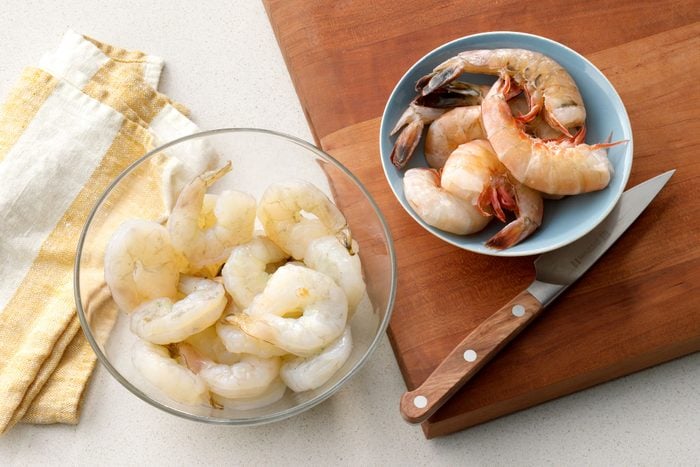
No matter the recipe, learning how to clean shrimp yourself makes the tastiest meal.
With shelled, precooked shrimp so easy to find frozen or refrigerated, learning how to clean shrimp and remove their shells may just seem like extra work. But uncooked frozen shrimp with their shells on—or better yet, live whole shrimp—retain far more flavor and tenderness than shrimp sold precleaned and precooked.
Starting with raw shrimp matters most in recipes that cook relatively slowly, like gumbo or a baked dish. But even recipes that sear shrimp for just a couple of minutes, like a shrimp and rice bowl, will be more succulent if you peel and cook the shrimp yourself.
Cleaning takes just seconds per shrimp. Here’s the entire process of how to clean shrimp, from head to tail.
First, should you peel your shrimp?
Before cleaning shrimp, consider how you’re going to eat them. Guests will thank you for peeling shrimp before cooking them in a sauce or with other ingredients. If you’ll be grilling shrimp on skewers, dipping them in a cocktail sauce or serving them at a shrimp boil, consider leaving some or all of the shell on. Unpeeled shrimp steam in their shells, retaining more juices and flavor.
How to Peel Shrimp
We’ll start from the beginning, with whole shrimp complete with head, legs and tail. Depending on how much processing happened before the shrimp arrived in your kitchen, some cleaning steps may have been handled for you. Just skip these steps—and stop peeling if you plan to cook the shrimp with some of the shell intact.
Step 1: Grip the shrimp

Hold the body with one hand, and grasp the head with your thumb and index finger of your other hand. Depending on the type of shrimp, you may need to avoid sharp parts of the shell to get a good grip.
Step 2: Remove the head

In a single motion, pinch and twist the head until it comes free. Stop here and rinse the shrimp body if you plan to cook it with the shell on for grilled or boiled peel-and-eat shrimp.
Step 3: Remove the legs

You may want to remove only the legs before cooking shell-on shrimp. To do so, hold the arc of the shell in one hand, grasp the legs with your opposite fingers and pull them free. Otherwise, the legs of most shrimp species will come off as you remove the shell.
Test Kitchen Tip: Tough shells, on types of shrimp like spot prawns, may be hard to break into. If needed, use a paring knife to carefully cut a slit just through shell between the legs.
Step 4: Peel off the shell
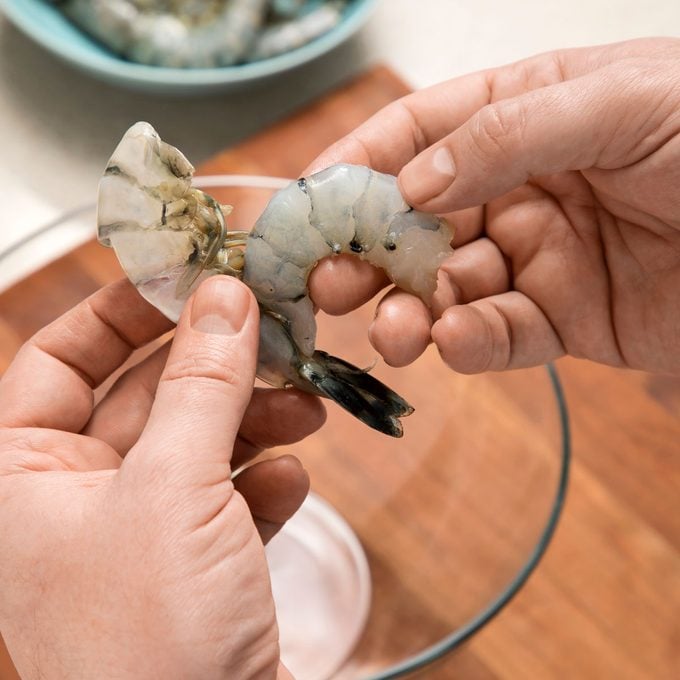
Starting at the head end, peel the shell back along the sides of the shrimp. Once you can pinch the shrimp flesh in one hand, grab the back ridge of the shell with your other hand and pop out the shrimp.
To pull the shrimp entirely free, pinch the shell and wiggle lightly as you pull so that the flesh comes out in one piece. If the tail shell accidentally stays attached to the meat, just pinch the tip of tail shell and pull the shrimp up out of it.
To intentionally leave just the tail shell on, such as for stuffed butterflied shrimp, grab the tail shell instead of the back ridge. It will stay attached when you pull off the rest of the shell.
Do you have to devein shrimp?
No; removing the “vein,” a dark line along the back of the shrimp, is ultimately a personal preference. Cooks are often in a hurry to remove it because it’s actually the shrimp’s digestive tract. However, the vein is edible, usually with little flavor or texture, but in the largest shrimp it can contain grit. If you can’t see the vein, don’t worry: It will be just as unnoticeable after cooking.
How do you tell if shrimp are deveined?
When you buy shell-on shrimp, the vein may already have been removed by a machine. The bag will likely say “deveined” or “E-Z peel,” but the telltale sign will be a slit down the back shell.
How to Devein Shrimp
At home, shrimp are easiest to devein after peeling. Here’s how to do it.
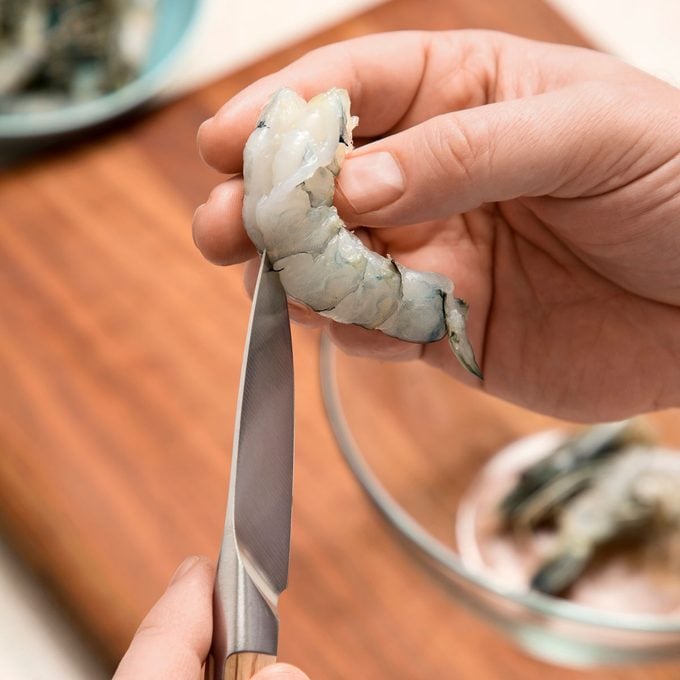
Using a paring knife, cut into the shrimp along its back, just deep enough to expose the vein. Tease out the vein with the tip of the knife until you can grab it with your fingers. Gently pull it toward the tail of the shrimp until it comes free.
Tips for Cooking with Shrimp
A few tips will help you choose and cook the tastiest shrimp.
Choose frozen over fresh—unless they’re alive
Almost every shrimp sold from a refrigerated case or counter display arrived at the store frozen and has been defrosted at least once. Individually quick frozen (IQF) shrimp sold in a 1- or 2-pound bag is a fresher choice. Raw IQF shrimp are typically sold headless, or “tailed.” They may be unpeeled, with the shell on, or peeled with just the tail shell intact.
Check the bag for freezer burn or excessive ice crystals, signs of thawing during transport. Once home, defrost the shrimp overnight in the refrigerator or in minutes under cool running water before you clean them.
If you’re lucky enough to buy live shrimp straight from a bubbler tank on a boat or in a fishmonger’s shop, you’ll be getting the freshest shrimp possible—fully alive, jumping and wriggling. Keep them cool until you can clean and cook them, without letting them sit in tap water. Submerged shrimp will quickly die, releasing an enzyme in the head that softens the meat.
Know the species and source
Shrimp species and origin give big clues about whether your meal was sustainably farmed or responsibly caught. Start by looking for shrimp certified by the Aquaculture Stewardship Council, Best Aquaculture Practices (BAP), the Marine Stewardship Council or Naturland.
Seafood Watch makes recommendations for buying all types of environmentally sustainable fish and shellfish. Good shrimp choices include most wild species caught in U.S. Atlantic, Pacific and Gulf of Mexico and in British Columbia waters, plus whiteleg shrimp farmed in the U.S., Ecuador, Honduras and Thailand.
The organization says most farmed shrimp from other countries are not raised responsibly, but exceptions depend on the method and species. Avoid buying most imported wild shrimp, especially those caught in Mexico and Argentine red shrimp.
Start with a quick cool rinse

There’s no need to scrub or wash shrimp—live, frozen or defrosted—but a little fresh water can help during prep. Rinsing under cool running water not only thaws frozen shrimp but shows their quality: Make sure they’re shiny, translucent and odorless. Give live shrimp a quick rinse to ensure you’re starting with clean shells. Rinse them again after removing the heads so that they’re easier to handle.
Rinse shrimp once more after you’ve finished cleaning them to make sure you haven’t left any shell bits behind.
Save the shells
That pile of peeled shells left after cleaning shrimp can impart flavor when cooked into a stock. Simmering the shells, and heads if you’re cleaning live shrimp, for 15 to 20 minutes releases a flavor-packed base for a shrimp-filled sauce or soup like tom yum goong.





